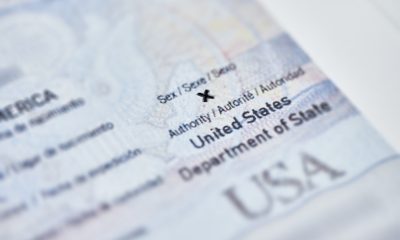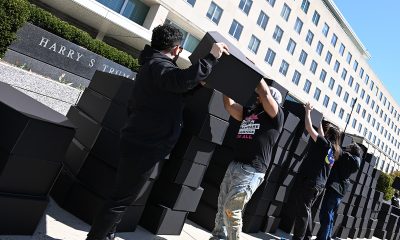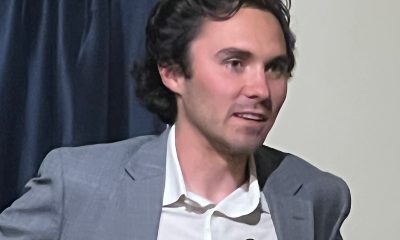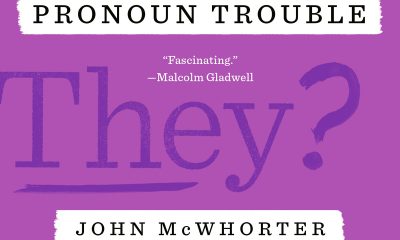Local
The scientific activist
Harvard award draws attention to Frank Kameny’s pre-activist days
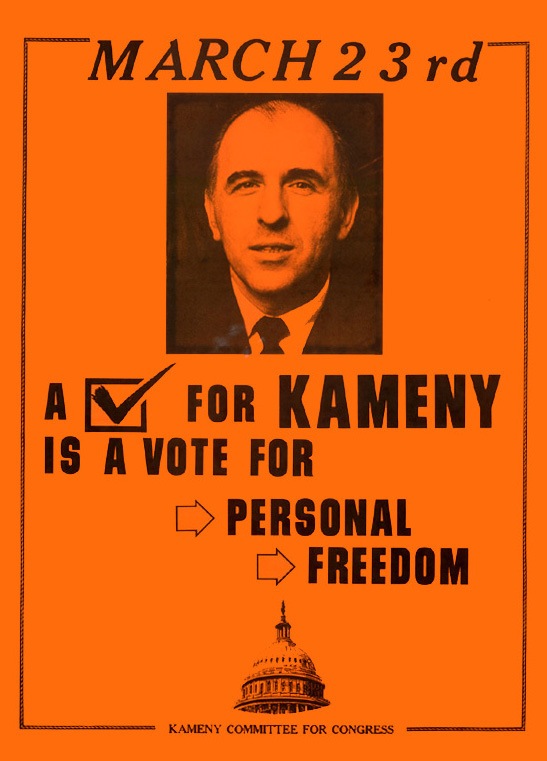
Veteran gay rights leader Frank Kameny, who is credited with founding the gay activist movement in Washington 41 years ago, returned to Cambridge, Mass., last month to receive an award from the Harvard University Gay & Lesbian Caucus. Kameny, 77, received a master’s degree from Harvard in 1949 and his Ph.D. there in 1956 — both in the field of astronomy.
With Harvard University President Lawrence Summers looking on, about 200 Harvard gay students and gay alumni gave Kameny a standing ovation on June 6 as an official with the Gay & Lesbian Caucus introduced Kameny at a ceremony on the Harvard campus.
The award presented to Kameny at the ceremony honors him for “his longstanding advocacy and activism and his incredible personal commitment and contribution to the lives of all gay, lesbian, bisexual, and transgender people.”
In an interview this week, Kameny said his return to Harvard brought back memories of his pre-gay activist days — including his studies at Harvard, his early ambitions to become an astronomer and become involved in the U.S. space program, and his service in the military during World War II.
Kameny rarely talks about his pre-activist days in his public appearances on behalf of gay rights. His friends and colleagues in the gay rights movement say those early years played a key role in shaping what observers say has been Kameny’s groundbreaking work on behalf of gays in D.C. and throughout the nation.
Long-time activists know Kameny for his role as founder in 1961 of the Mattachine Society of Washington, D.C., the first gay rights group in the nation’s capital. Shortly after its founding, Kameny broke new ground by leading the first ever gay rights protests in front of the White House, Pentagon and State Department.
Those who know Kameny say few people are aware of his use of the scientific principles and knowledge he acquired in the study of physics and astronomy to debunk the psychiatric theories of the 1950s and 1960s, which held that homosexuality was an illness and that gays suffered from a psychiatric disorder.
In his 1981 book, “Homosexuality and American Psychiatry: The Politics of Diagnosis,” researcher Ronald Bayer credits Kameny with almost single-handedly persuading the early homophile movement to change its position of accepting the prevailing psychiatric theories that gays were disordered to the posture that these theories were scientifically unsound and must be refuted.
Kameny said his love for science began in his teenage years in New York City’s borough of Queens. He graduated from Richmond Hill High School in 1941, at the age of 16, after skipping two grades, in part, because of his exceptional aptitude for science and math. In September 1941, Kameny began his undergraduate studies in physics at New York’s Queens College.
He said he had expected to immerse himself “in the sheer joy” of courses in math and physics, along with other college related activities. But all of that changed abruptly three months later when the Japanese attacked Pearl Harbor. “Nothing was the same after that,” Kameny said.
Two years later, in May 1943, Kameny enlisted in the Army, signing his enlistment papers three days before his 18th birthday. In September of that year, he was called into active duty, where he remained until March 1946. Although he had two years of college under his belt, Kameny said his Army superiors assigned him to a mortar crew with the 58th Armored Infantry, which was part of the Army’s 8th Armored Division in Europe.
Before he knew it, Kameny said, he was engaged in front-line combat in France, Holland and Germany. Some of his most harrowing moments, he said, came during the Battle of the Bulge, where the German army made a ferocious effort to break through the lines of allied forces. Stationed in trenches during freezing whether, Kameny recounts how he and his fellow soldiers endured German artillery fire while trying to catch some sleep in the dead of night.
“I came within a hair’s breadth of losing my life several times,” Kameny said. “If you hear the whistle of a shell and then the explosion, you’re OK,” he said. “But if the whistle stops suddenly, before the explosion, you’re in gave danger of being hit.”
Years later, Kameny would wear the combat medal he earned in the Battle of the Bulge as he led the D.C. Gay & Lesbian Activists Alliance in presenting its annual Memorial Day wreath at the Tomb of the Unknown Soldier at Arlington National Cemetery.
Space ambitions jettisoned
At the conclusion of the war, Kameny returned to Queens College after being discharged from the Army in 1946. He completed his undergraduate work less than two years later and began his studies at Harvard. While there, he taught astronomy at Yale University and later traveled to Arizona and Northern Island, where he conducted research in astronomy at internationally acclaimed observatories. After receiving his PhD. at Harvard in 1956, he began teaching astronomy at Georgetown University.
In 1957, he left Georgetown after being recruited by the government to take a job as an astronomer with the Army Map Service in Washington. The nation’s race against the Russians for superiority in space had just begun in full force. Kameny had set his sights, among other things, on a possible role in the U.S. space program. A short time later, Congress created the National Aeronautics & Space Administration. Kameny has said he would have seriously considered applying to become an astronaut. But that was not to come about.
Just five months into his job at the Army Map Service, U.S. government security officials discovered Kameny was gay and opened an investigation into Kameny’s alleged “threat” to national security. Within a few weeks, he was dismissed from his job, with his name placed on a list of people labeled as government security risks.
Kameny fought his dismissal in court, taking it all the way to the U.S. Supreme Court, where he became the first to challenge a firing by the federal government on grounds of sexual orientation. The high court let stand a lower court ruling against Kameny, effectively ending his career as a civil servant and an astronomer.
What Kameny did next, as the saying goes, is part of history — at least the history of the U.S. gay civil rights movement. His longtime friend and fellow activist, Craig Howell, has said that had it not been for the government’s discovery of his sexual orientation, Kameny would likely have become one of the world’s eminent astronomers.
“The government’s loss became our gain,” said Howell.

District of Columbia
D.C. police seek help in identifying suspect in anti-gay threats case
Victim threatened with assault, called ‘faggot’ as he left Capitals game
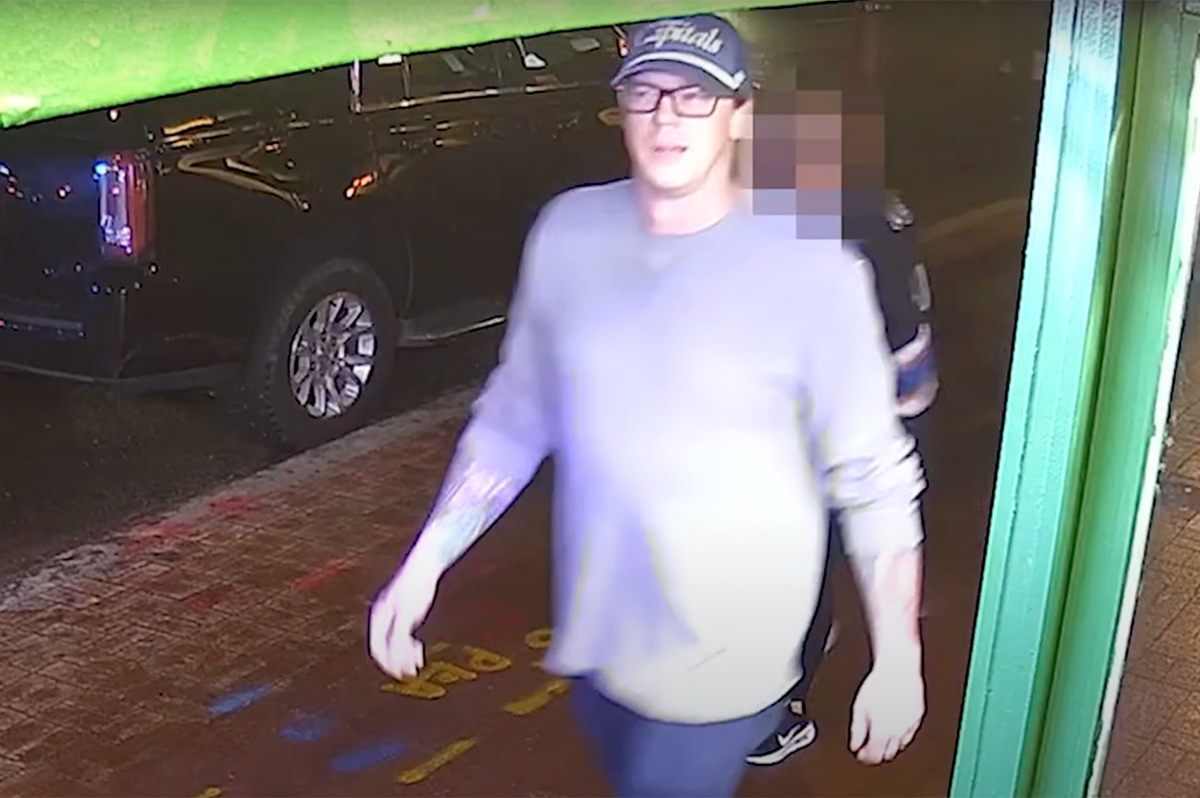
D.C. police are seeking help from the public in identifying a male suspect whose image was captured by a video surveillance camera after he allegedly shouted anti-gay slurs and threatened to assault a man at 6th and H Streets, N.W. on March 20 at about 9:54 p.m.
A police report says the victim told police the incident took place shortly after he exited the nearby Capital One Arena where he had attended a Washington Capitals hockey game.
The police report says the incident began when the victim saw the suspect yell a racist slur at a person behind the victim and started to berate a valet operator.
“Suspect 1 then turned his attention to Victim 1 and called him a ‘faggot’ among other homophobic slurs,” the report says. It says the victim then used his phone to record the suspect, prompting the suspect to walk away before returning and “snatching” the phone from the victim’s hand.
“Suspect 1 walked several feet as Victim 1 followed, requesting his phone back,” the report continues. “Suspect 1 stopped and turned to Victim 1 and while yelling other obscenities exclaimed ‘if you keep recording, I’m going to kick your ass.’” The report concludes by saying the victim was able to recover his phone.
It lists the incident as a “Threats To Do Bodily Harm” offense that is a suspected hate crime.
“Anyone who can identify this suspect or has knowledge of this incident should take no action but call police at 202-727-9099, or text your tip to the Department’s TEXT TIP LINE at 50411,” according to a separate police statement released April 23.
The statement says police currently offer an award of up to $1,000 to anyone who can provide information that leads to an arrest and indictment of the person or persons responsible for a crime committed in D.C.
D.C. police spokesperson Tom Lynch said the case has been under investigation since the incident occurred on March 20. He said the video image of the suspect, most likely obtained from a security camera from a nearby business, was released to the public as soon as it was obtained and processed through the investigation.
District of Columbia
Wanda Alston Foundation names new executive director
Longtime LGBTQ rights advocate Cesar Toledo to succeed June Crenshaw
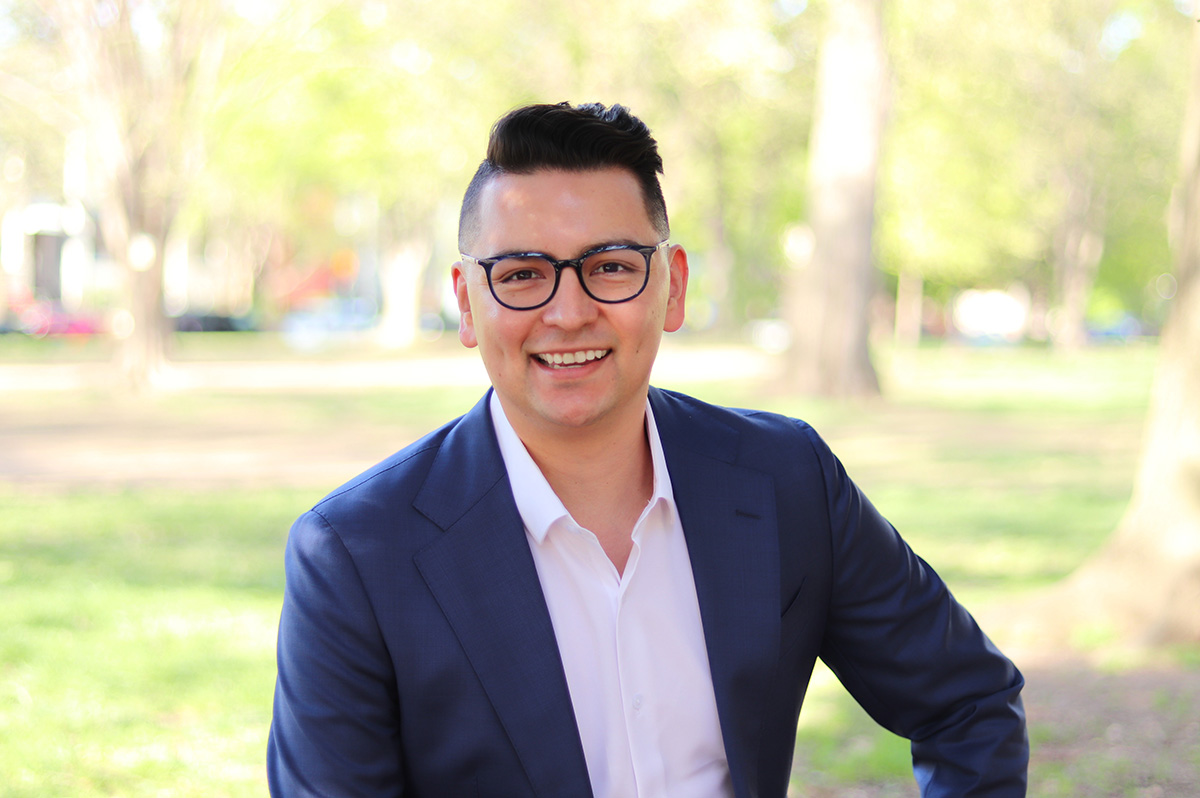
The Wanda Alston Foundation, the D.C.-based organization that has provided housing and support services for homeless LGBTQ youth since its founding in 2008, announced it has appointed longtime LGBTQ rights advocate Cesar Toledo as its new executive director.
In an April 22 statement, the organization said that as part of a planned leadership transition launched in November 2024, Toledo will succeed June Crenshaw, who Alston Foundation officials and LGBTQ community activists say has led the organization with distinction in her role as executive director for the past nine years.
In a statement released last November, the foundation announced Crenshaw was stepping down from her role as executive director after deciding to “to step into her next chapter.”
“June’s leadership has been truly transformative,” said Alston Foundation Board Chair Darrin Glymph in the group’s April 22 statement. “We are immensely grateful for her dedication and equally excited for the energy and experience that Cesar brings to lead us into this next chapter,” Glymph said.
“A seasoned LGBTQ+ advocate, Cesar brings over a decade of experience leading national campaigns, shaping public policy, and building inclusive communities,” the statement released by the group says. “Most recently, he served as the National LGBTQ+ Engagement Director for the Harris for President Campaign and has built a career focused on advancing equality and equitable education,” it says.
Biographical information about Toledo shows that immediately prior to working for the Harris For President Campaign, he served since April 2023 as deputy director for Democrats for Education Reform DC (DFER DC), a political group that helps to elect candidates for public office committed to quality education for all students, including minorities, people of color and LGBTQ youth.
Before joining DFER DC, Toledo served as political director for the LGBTQ+ Victory Fund, where he assisted in electing out LGBTQ candidates to all levels of public office across the U.S.
“I’m really excited about joining the Wanda Alston Foundation,” Toledo told the Washington Blade. “After a decade of working at the intersection of politics and policy and advancing political candidates and equitable education here in D.C., I wanted to shift my career to direct services to the most vulnerable folks in the LGBTQ+ family and our homeless youth,” he said.
Among other things, he said he would push for increasing the Alston Foundation’s visibility and mainlining its services for LGBTQ youth at a time when the national political climate has become less supportive.
A statement on its website says the Alston Foundation was founded in 2008 “in memory of Wanda Alston, a fierce LGBTQ+ activist, national advocate, and government official who was admired by District residents.”
The statement adds, “The foundation opened the first housing program in the nation’s capital in 2008 providing pre-independent transitional living and life-saving support services to LGBTQ+ youth.”
In a separate statement, the Alston Foundation announced it would hold a “thank you” celebration of appreciation for June Crenshaw from 6-8 p.m. on May 20 at Crush Dance Bar located at 2007 14th Street, N.W. in D.C.
“Let’s come together to celebrate her dedication and commitment for everything she has done for the LGBTQIA homeless youth population,” the statement says.
Virginia
Gay talk show host wins GOP nom for Va. lieutenant guv
John Reid becomes first out gay nominee for statewide office in state
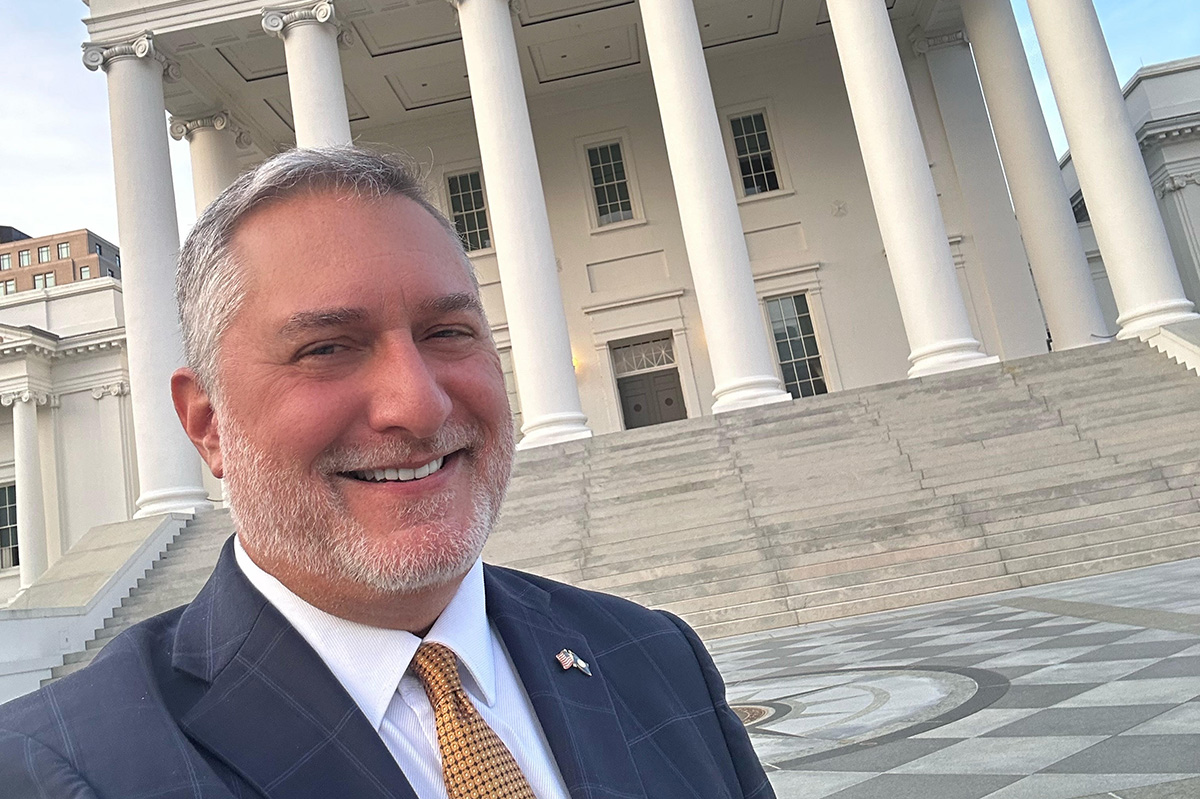
John Reid, a conservative gay radio talk show host in Richmond for many years, this week secured the Republican nomination for the office of lieutenant governor in Virginia, becoming the first known openly gay person to be nominated for a statewide office in that state.
Reid secured the nomination after his only rival in the Republican primary, Fairfax County Supervisor Pat Herrity, dropped out of the race this week for health reasons.
Herrity’s decision to withdraw from the race finalized the GOP nominees for Virginia’s three statewide contests in the November general election in what political observers are calling an unusually diverse GOP slate.
Current Virginia Lt. Gov. Winsome Earle-Sears, a Black woman, captured the GOP nomination for governor without a GOP opponent. Jason S. Miyares, a Hispanic man, is running for re-election as Virginia attorney general without a GOP rival. And Reid, a gay man, is the GOP nominee for lieutenant governor.
Reid will face one of six Democratic candidates for lieutenant governor who are competing in the June 17 Democratic primary.
The Blade spoke with Reid on Tuesday. Below is a partial transcript of that interview.
Blade: Is there a message you have for LGBTQ voters in Virginia, including Democrats, for why you think they should vote for you?
Reid: Well, the thing that I would say to gay voters who are looking and examining the candidates, is that I was out of the closet as a gay Republican publicly in very difficult rooms where people weren’t accepting of gay men – long before Donald Trump said I don’t care about this stuff.
And long before polite society said this was OK. So, in the ‘90s I came out on television and said on Oct. 11 – it was on National Coming Out Day. It was probably in 1996 or 1997. I started at the TV station in 1994. So, it was a couple of years into it.
I came out and said you never know your news anchor could be gay on National Coming Out Day. And everyone was appalled. How can you say this? You’re not supposed to say something like that. So even though I’m a Republican I know some people in the LGBT community are reflexively hostile to Republicans.
I took that step in public, and I think I helped change a lot of minds within the Republican Party and within central Virginia, which continues to be a pretty conservative place by being true to who I am. I spoke out in meetings around Republican staff and legislators and said I think we are not doing the right thing by being hostile to gay marriage.
We talk about the importance of family – Republicans talk about the importance of family, the importance of marriage as a fundamental building block of society. And a gay marriage is a net positive. Is it biblical to people who are following traditional Christian theology? No. But is it good for our society to have people in committed relationships? I think yes.
When we were going through the debate over gays in the military I said I see no reason that someone who is qualified to be in the military and can meet every single standard that everyone else is asked to meet, why should they not be in the Naval Academy, the Air Force Academy, West Point? Or serving as a grunt in active duty. Why would we exclude those people?
And those were very unpopular positions within the Republican Party.
Blade: Your campaign website says you have supported civil unions for same-sex couples. I could have missed seeing it, but I didn’t see an expression of support for gay marriage. Are you saying now that you support full same-sex marriage?
Reid: You know, you’re right. There is a distinction. And I think marriage is completely legitimate. Civil unions – if you want to go and sign paperwork at the courthouse – that’s great. If you want to be married and if a church wants to marry you if you find a church and religious leader and group that wants to bless that – that’s what I hope to do with my partner now.
Sometime in the near future I hope we will be married. And it’s very important to me as a Christian to be married in a church. So, that’s interesting. Most people would not draw that distinction. I appreciate that you’re drawing a distinction. I’m supportive of both.
Blade: Did you say you worked for a member of Congress? Can you say who that was?
Reid: George Allen, the senator from Virginia. And, of course, you and I – I know you’ve covered so many stories like this that you’ve brought together. But it was a very difficult position. When I started with Sen. Allen, he had a very libertarian attitude about this. The [Virginia State] constitutional amendment was not necessary. There was no need to go down that road.
And of course President Bush – George W. – was very assertive during the 2004 campaign. And then the issue continued to bubble up and you know we wound up with this amendment in the Virginia Constitution that banned gay marriage until the Supreme Court decision. And I was not supportive of that. And I voted for my boss, my senator, who I respected and still do respect.
Blade: Your website shows that your support for the gay community does not extend to the transgender community.
Reid: Yeah, I hate this. But I do think that our current focus on trans issues is where the gay rights movement has jumped the shark. And I think we’re losing support that we worked very diligently for decades to build with the average person. And I’m puzzled that the former leaders of the Human Rights Campaign had presidents when Elizabeth Birch and others – I don’t know what their stance is today.
I do recall that all of us who talked about gay rights issues focused on normalcy and that we would meet every standard that everyone else met. That all the vile things that were said about gays being pedophiles and grooming children – that simply was not true.
And I think we have stumbled into a very unfortunate and dangerous territory where we’re almost taunting the average person with an insistence that they accept drag queen story hour and the provocative books and provocative media that the average person would say, ‘You told us you were normal. – quote unquote normal – and now you are peddling an agenda which we don’t agree with and you’re being really aggressive about it.
And that’s really a difference. I know you’ve been covering it for a long time. I don’t know if you agree with this. I think we are peddling a very different political agenda today than the gay community was 20 years ago. And I think we should restrain ourselves and be cautious about that. And I think we’re in dangerous territory with the general population. And I’d urge caution about that.
Blade: Online reports show that there are as many as six Democratic candidates competing for the lieutenant governor’s position in the June 17 Democratic primary. Do you know any of them?
Reid: I’m familiar with most of them. Some are from the Richmond area. And I believe they are all very supportive of gay rights, which is I think a good thing. My reason for challenging them as a Republican – and I think there are other places where there is a lack of appropriate leadership and good judgment. And so, I don’t expect the gay issue would be a real issue. The trans issue may be a point of contention in the race.
But I don’t think the gay issue – and I do draw a distinction between the two — I don’t think that will be a real dividing line with those Democrat[ic] candidates.
Blade: So unlike when you were a TV news anchor, on your radio talk show were you able to offer more opinions and commentary?
Reid: That’s correct. There was a lot of opining, no script. So, I was able to tell stories about how I traveled to Miami, and I went to Washington. I went to the Kennedy Center and shared some of my life and lifestyle as appropriate with the audience.
Blade: Well, thank you for this interview.
Reid: I’m happy to talk to you. One of the reasons I called you back is that the political consultants have always told me don’t talk to anybody that might disagree with you. And I reject that. I have already lived 30 years as an out gay man. And it has been very difficult. And I would like to make it easier for the next generation to live their authentic selves. … Calling you and talking to you against the advice of all these people who say never do that, I’m hopeful that my willingness to engage and be candid will ultimately be well received, I hope.
